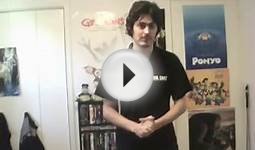Loch Ness Monster History Channel
A still shot from a video that some think shows a monster in Lake Champlain in Vermont.
Credit: YouTube
There are many lakes around the world reputed to hold monsters. The cold, deep waters of Loch Ness in Scotland are home to the world-famous Nessie. Canada is said to be home to several lake monsters (including Ogopogo in British Columbia's Lake Okanagan, and Cressie in Newfoundland's Crescent Lake). The American counterpart to Nessie and Cressie is said to lurk in Lake Champlain, on the border between Vermont and New York.
"Champ, " as the creature is affectionately called, has allegedly been seen by hundreds of witnesses over the years. Descriptions of Champ vary, but most suggest a creature between 20 and 80 feet long, with a series of distinct humps and a serpentine body. Some say the head looks like a snake or a dog.
 The lake (and therefore the monster) is named for French explorer Samuel de Champlain, who is often — but erroneously — said to have been the first to see the creature. Sought after by famous showman P.T. Barnum, featured on the "Unsolved Mysteries" television program, and quasi-officially protected by both the New York State Assembly and the Vermont Legislature, Champ remains a modern mystery.
The lake (and therefore the monster) is named for French explorer Samuel de Champlain, who is often — but erroneously — said to have been the first to see the creature. Sought after by famous showman P.T. Barnum, featured on the "Unsolved Mysteries" television program, and quasi-officially protected by both the New York State Assembly and the Vermont Legislature, Champ remains a modern mystery.
The 'best evidence' for Champ
The best photographic evidence for Champ — indeed, of any lake monster — is a single snapshot taken in 1977. A woman named Sandra Mansi photographed something dark in the lake one summer day that seemed to form a mysterious dark head and hump. Mansi estimated that the creature's "neck" stuck about six feet out of the water and the whole object was about 12 feet long. The object floated, motionless, for between four and seven minutes before sinking slowly straight down. She also reported that the object's surface looked like tree bark.
Field investigations conducted (by the author of this article) for a Discovery Channel documentary show revealed that Mansi overestimated the object's size; the "neck" of the object sticks about three feet out of the water, and both segments together are about seven feet across.
бетбоом букмекерская контора
You might also like








